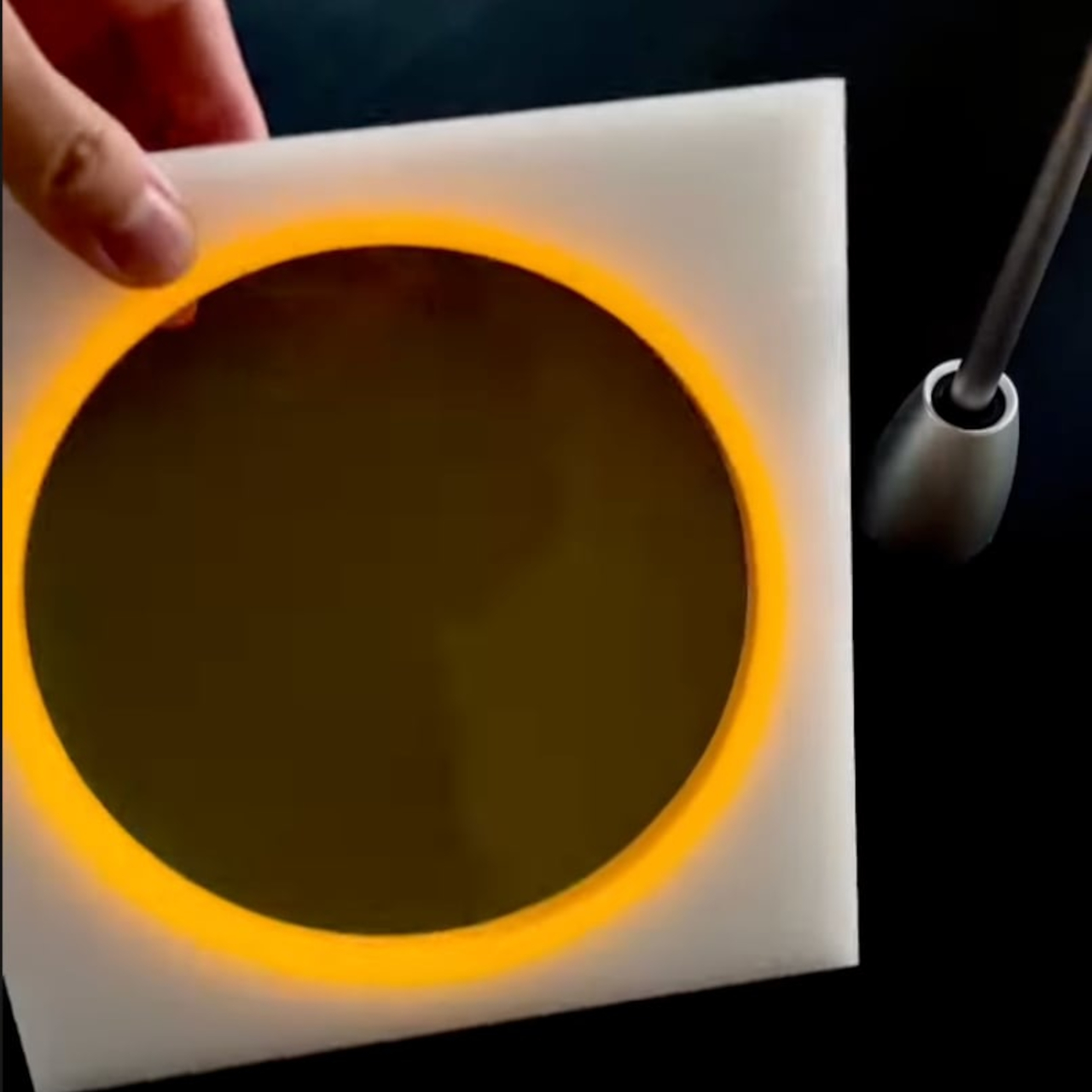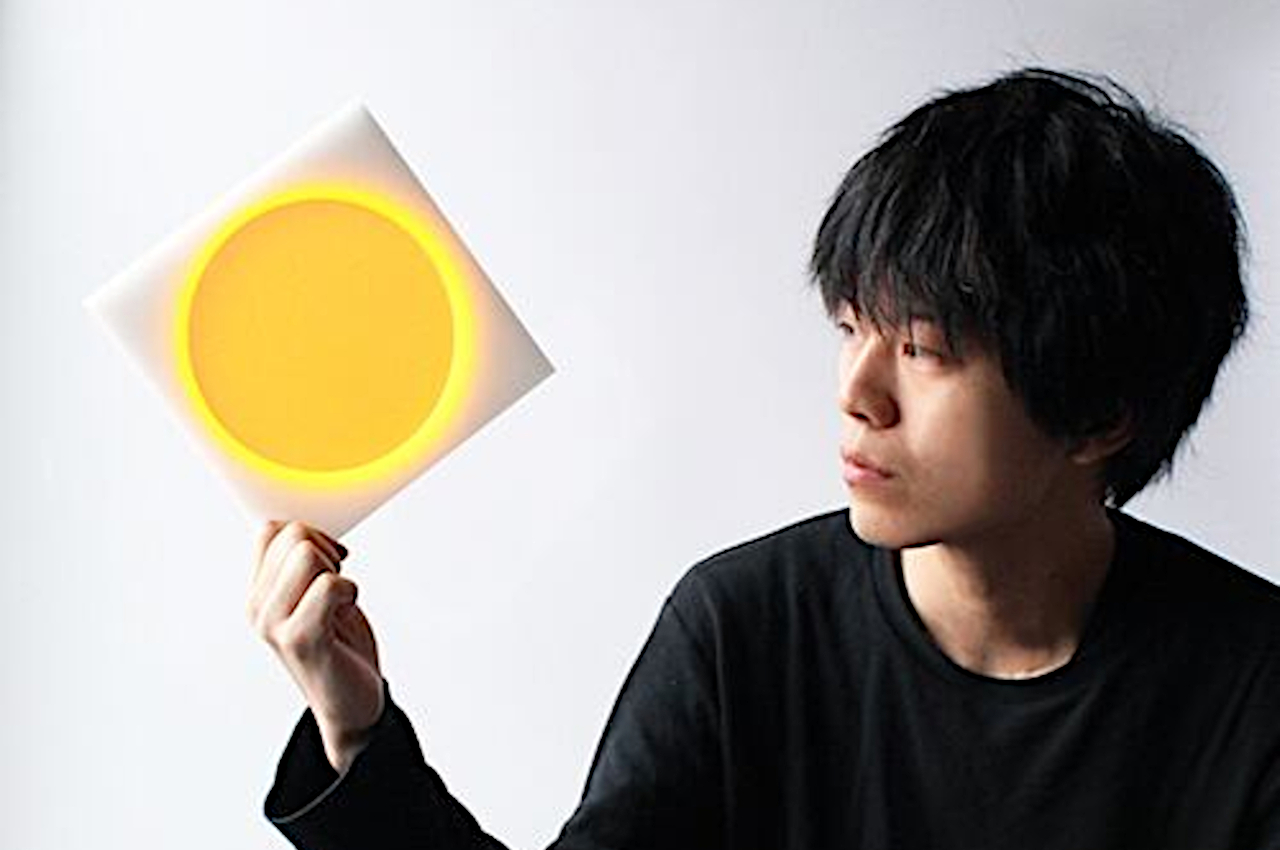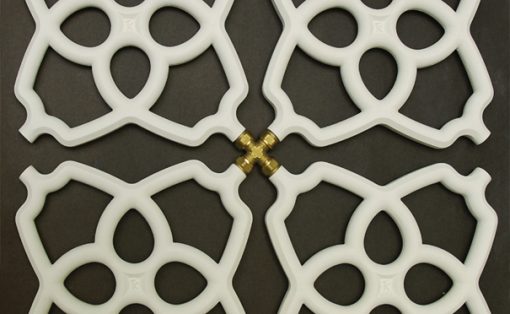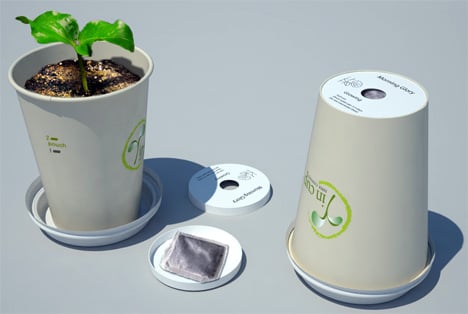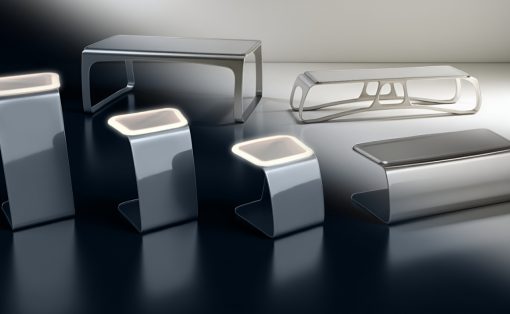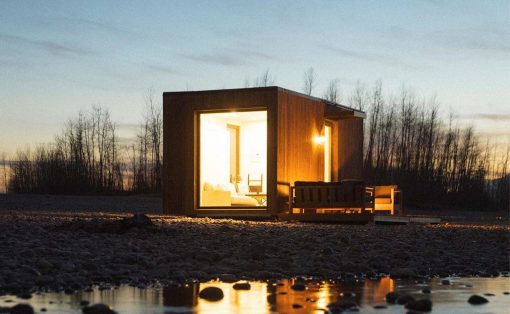We have seen many kinds of lamps and lighting fixtures, some more decorative while others are mostly utilitarian in their design. What binds most of these lamps together is their need to be plugged in one way or another, whether it’s to directly tap into a power grid or to charge their internal batteries. Sooner or later, we will realize just how much we consume to light up our homes, especially when it comes to less practical uses like setting the mood or enhancing the atmosphere in a room. These types of lighting might be better off getting their power from alternative sources, and this rather intriguing sheet of acrylic does exactly that by “recycling” the light around it, turning it into energy to generate its own soft circular glow.
Designer: Yuichiro Morimoto
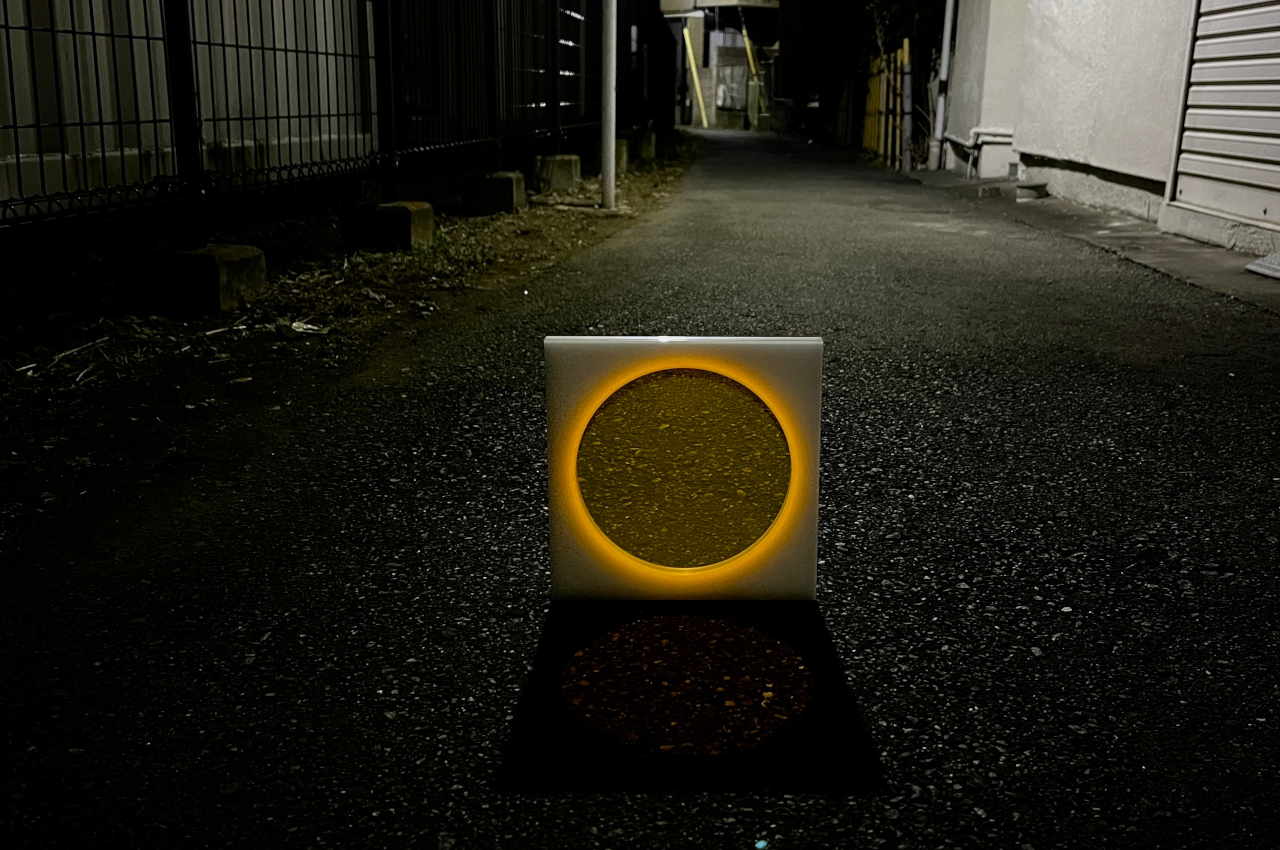
Of course, we’ve seen our fair share of “glow in the dark” products that store a bit of sunlight to give them an eerie appearance in the dark. It’s hardly usable as a lighting solution, though, since it can barely illuminate a small area for a long period of time. On the other hand, solar-powered devices are a bit more practical but also less attractive because of the panels that need to be included in the design.
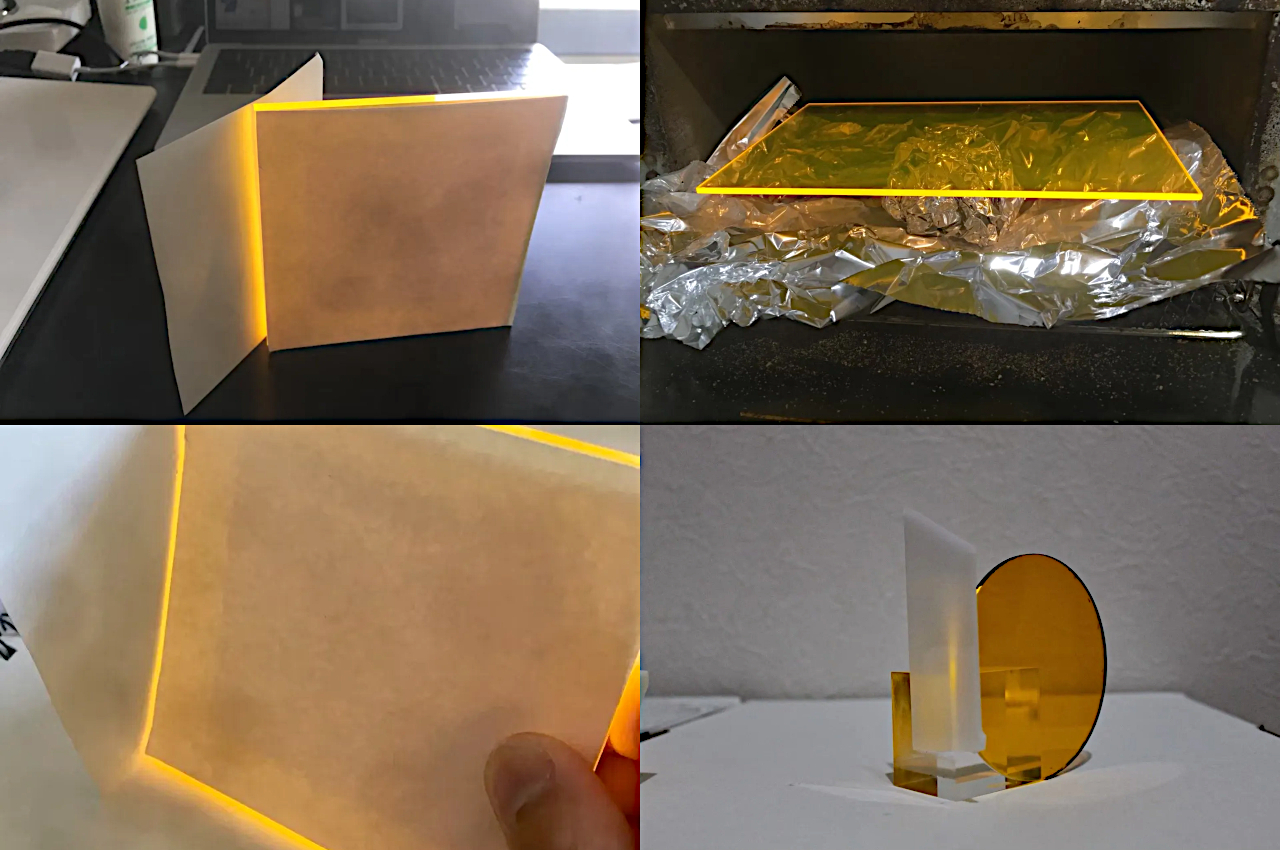
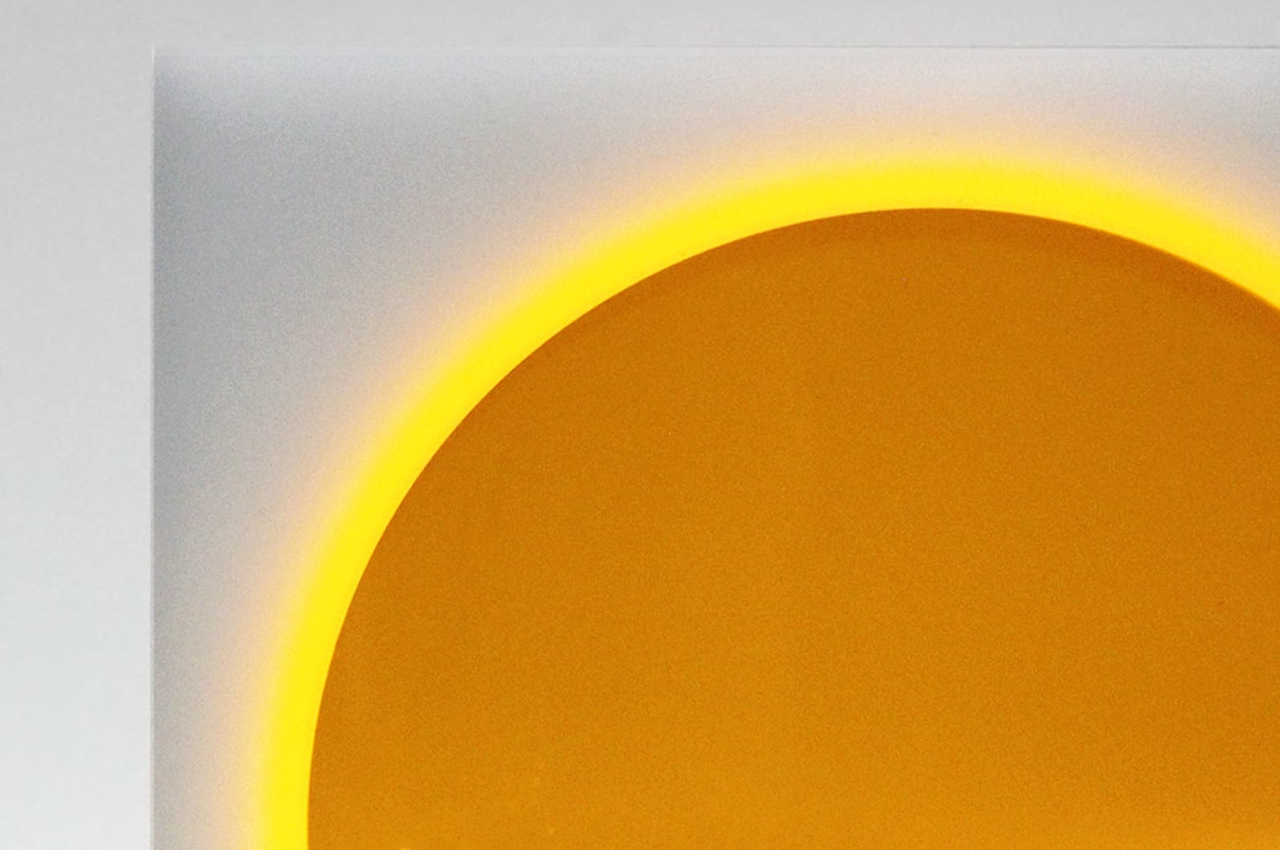
Nisshoku, which is the Japanese word for “eclipse,” utilizes a different technology to generate power using electricity. Light is collected using a specially-treated acrylic surface that acts as a condensing plate that gathers ambient light around it. Rather than convert light into electricity, which can’t be done with non-solar light anyway, the plate instead releases the light along the edges of a circular shape that is always exposed to the outside world, enabling it to accept any and all kinds of light in an area.
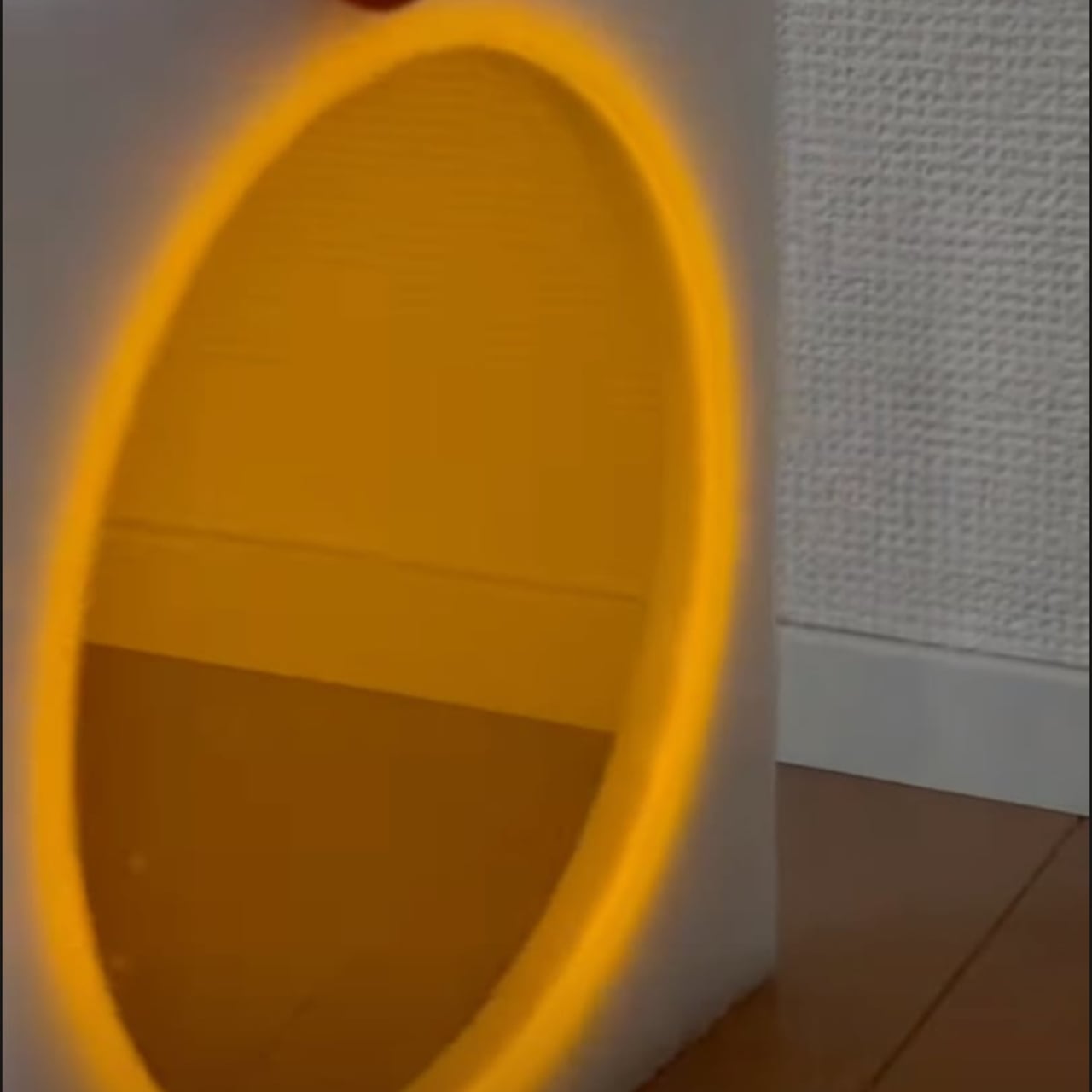
This material is then set in the middle of an opalescent acrylic square that covers the edges of the condensing plate. This creates the effect of diffusing the light at the edges, which looks like the corona of a full solar eclipse, hence its name. The end result is a warm yet eerie glow that easily draws one’s attention, all without using any electricity. And the way it glows is determined by how much light it is able to gather, so it will vary depending on the environment.
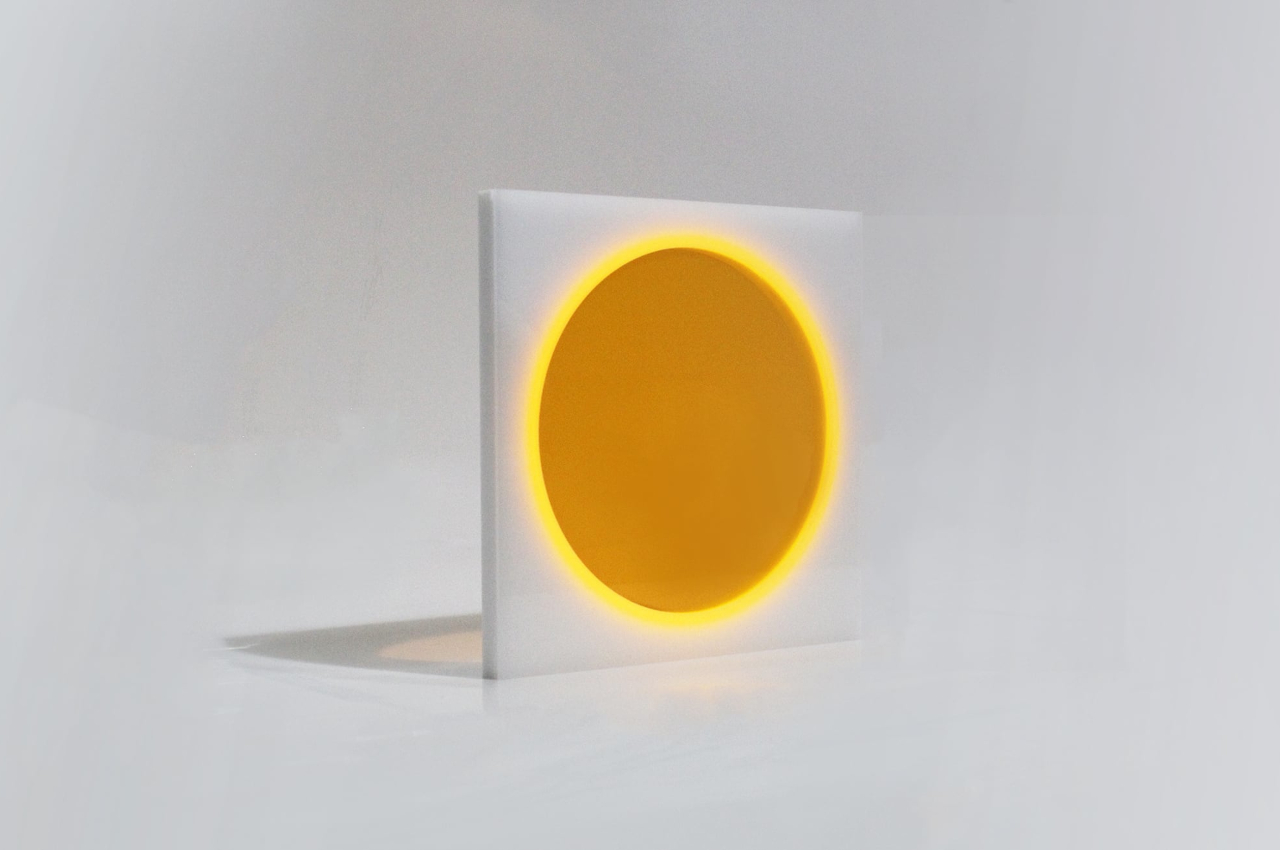
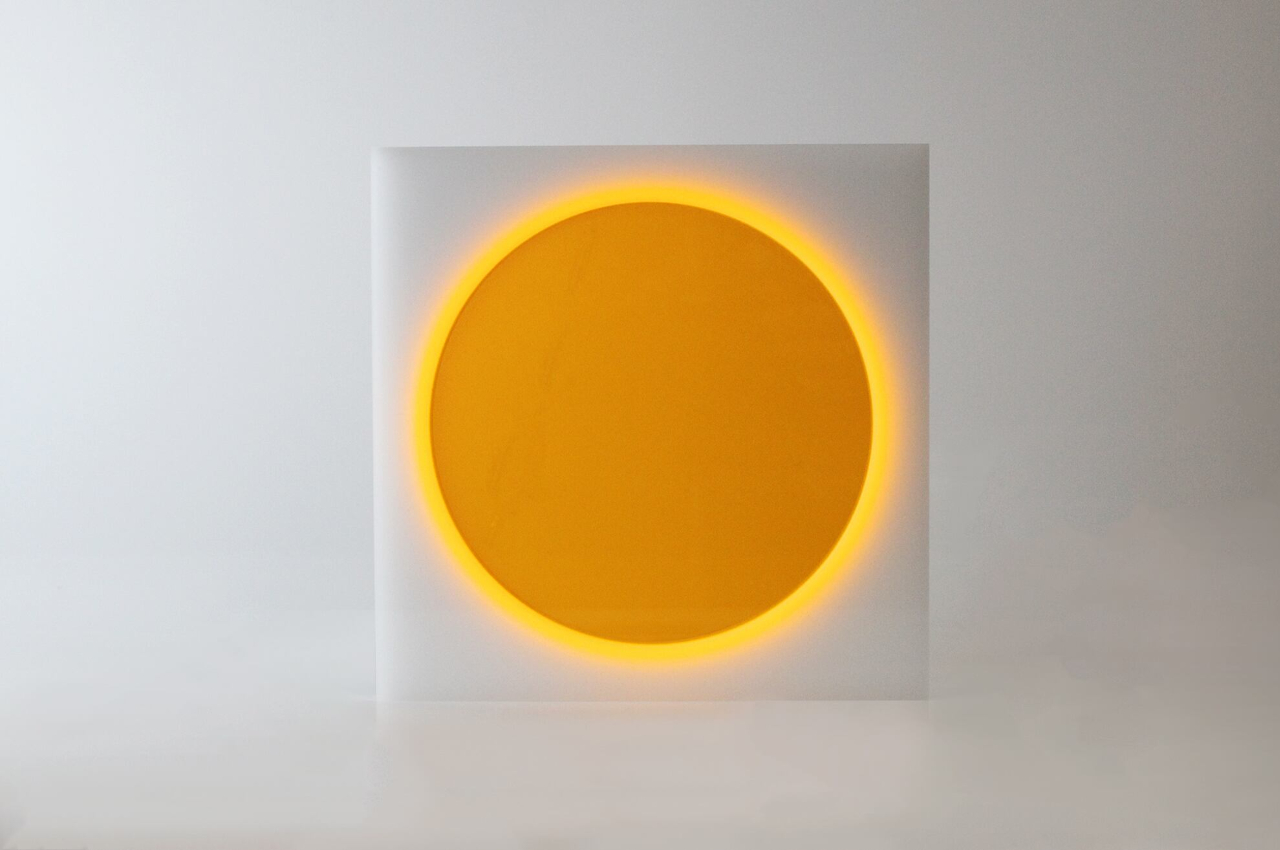
Of course, it isn’t going to be usable as a light source in the darkness because it does require light to be present to work. It is mostly decorative than practical, but at least you won’t be wasting any electric power just to make your room look a bit more appealing.
